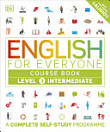Equity, Social Justice, and English Medium Instruction: Case Studies from Asia
About this ebook
About the author
Ram Ashish Giri, academic at Monash College/Monash University, English Language Centre, Melbourne, teaches and researches issues related to ELICOS courses, TESOL, language testing, and language (education) policy. Prior to joining Monash University (Monash College), he worked for Tribhuvan University, Nepal, as a lecturer and then as an associate professor for about 15 years. He pioneered the establishment of Nepal English Language Teachers’ Association (NELTA) in 1991. NELTA, today, is one of the largest associations for the English teachers of all levels. He has published articles, book chapters, and edited books. Currently, he is an editor-in-chief of Journal of NELTA, co-editor of TESL-EJ, and a member of Editorial Board of ASIA TEFL.
Amol Padwad was formerly a professor of SOL, and director, Centre for English Language Education at Ambedkar University Delhi. He was the secretary, AINET Association of English Teachers (AINET), and a former National President of English Language Teachers’ Association of India (ELTAI). Currently, he is a trustee of A. S. Hornby Educational Trust, UK. In a career spanning nearly 40 years, he has been a teacher, teacher trainer, researcher, and ELT consultant for various government bodies and NGOs. He pioneered ‘English Teachers Clubs,’ teachers’ self-help groups promoting self-initiated professional development, in some rural towns of India. Areas of his professional interest include teacher development and communities, history of ELE, decentring in ELT, and teacher research.
Mian Md. Naushaad Kabir is an associate professor of TESOL at the Institute of Modern Languages, University of Dhaka (IML, DU). He received his Ph.D. in English Language Education from The English and Foreign Languages University (Hyderabad, India), M.A. from IML, DU, and B.A. (Hons) in English from Khulna University. He co-edited ‘On Language in Leapyear’ (2020, IML, DU), ‘The Routledge Handbook of English Language Education in Bangladesh’ (2021), ‘English as a Medium of Instruction in South Asia: Issues in Equity and Social Justice’ (2024, Routledge), and ‘Language in Society in Bangladesh and Beyond: Voices of the Unheard in the Global South’ (2024, Routledge). As the executive/managing editor, he founded BELTA Journal (2017) and TESOL Bangladesh Journal (2024). He translates and edits textbooks and writes teachers’ guides for the National Curriculum and Textbook Board, Bangladesh.






